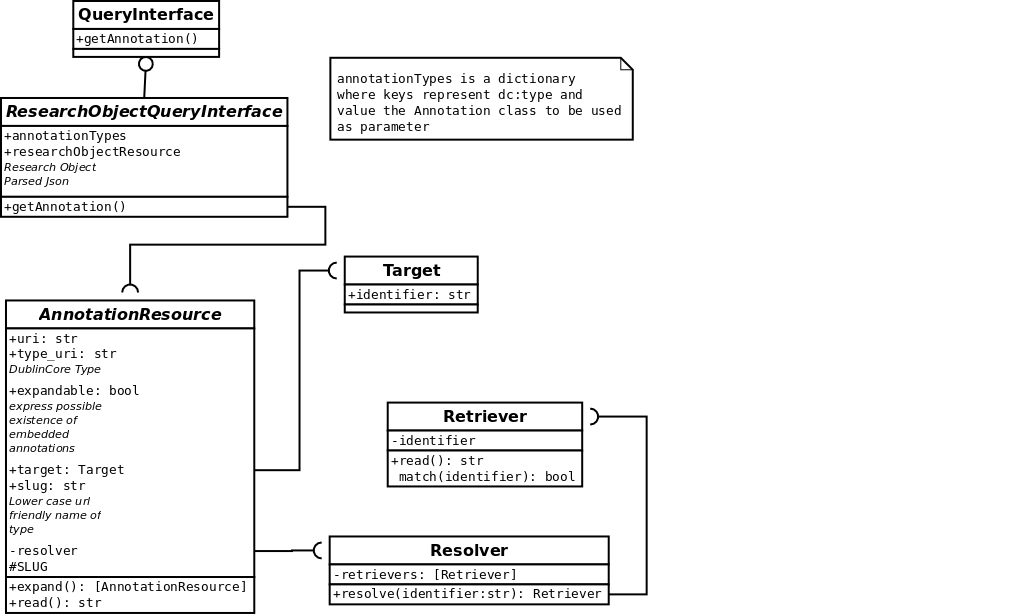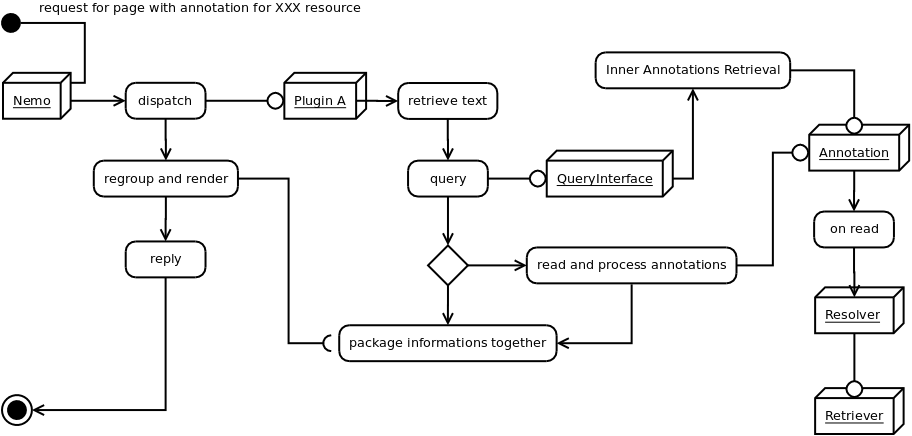QueryInterface Design and Components Hierarchy¶
Description of the components¶

QueryInterface¶
is an object that given a URN retrieves annotations for it.
- Query interface should be fed with a function to retrieve valid references of the text
- It should have a .getAnnotation method which returns tuple where first element is a list of annotations and the second is the number of found resources
*urnwhich takes a URN Object (MyCapytain)wildcardas a boolean.means exact match.%means lower match matches%.means higher match matches-in range of%.%means not level dependant
include, excludewhich would restrict the type of resources that can be retrieved using list of typeslimitas a limit of number, default to Nonestartas the first parameterexpandshould automatically expand annotations matching
Annotations¶
- Takes a resolver
- Has a read() method
- Has an .expandable properties which means the annotation might have embedded annotations
- Has an expand() methods which returns embedded annotations as a list
Resolver¶
- Decides on which retriever to use in a list of retrievers.
- Takes retrievers=[] as init argument
- Has a function resolve that takes an identifier argument
- Return a Retriever object
Retriever¶
Retriever retrieves a resource given an identifier which can be cts, cite, local path, url, you name it.
- Has a .match() static method that returns True or False if the identifier can be retrieved by it
- Has a .read() method that returns the body of the resource
